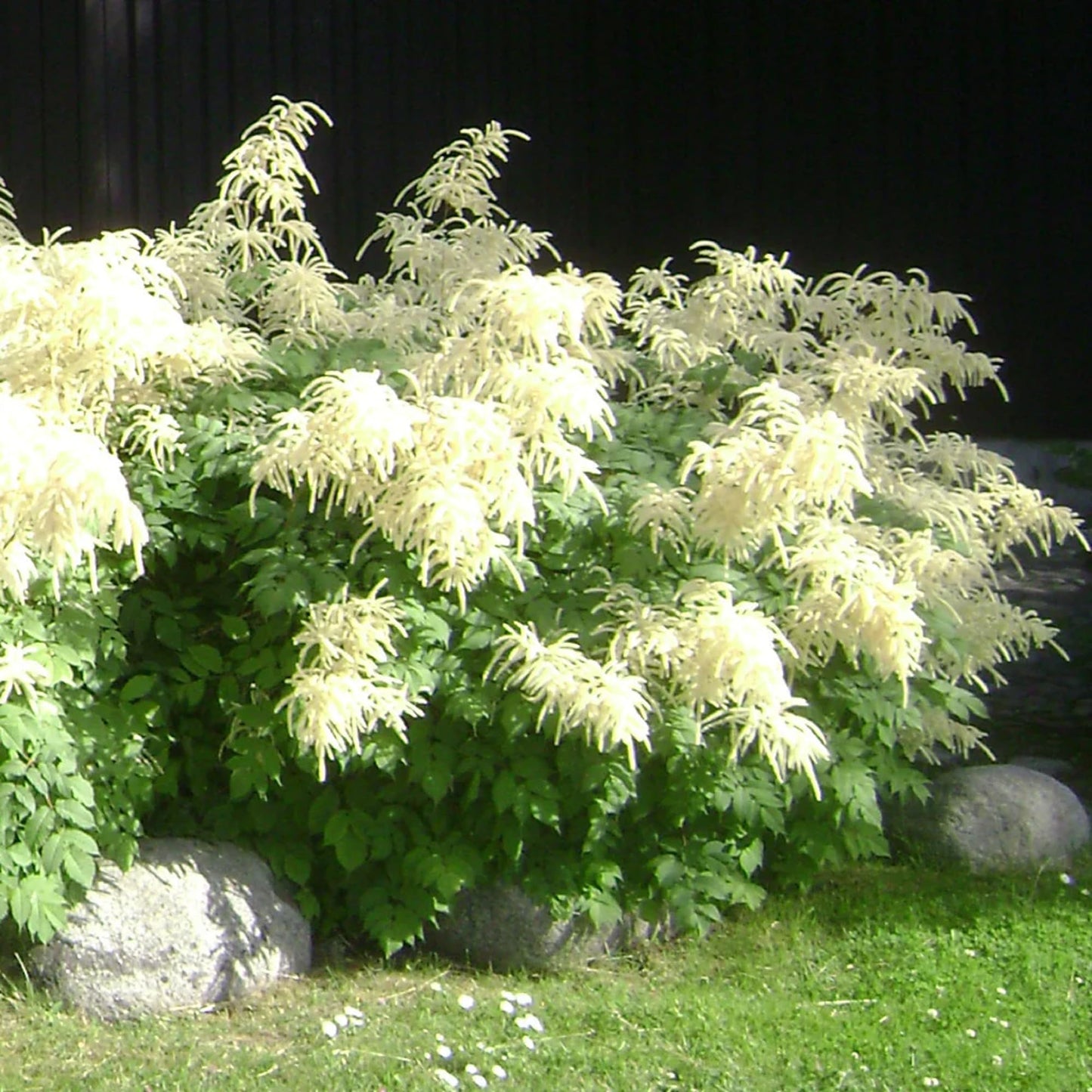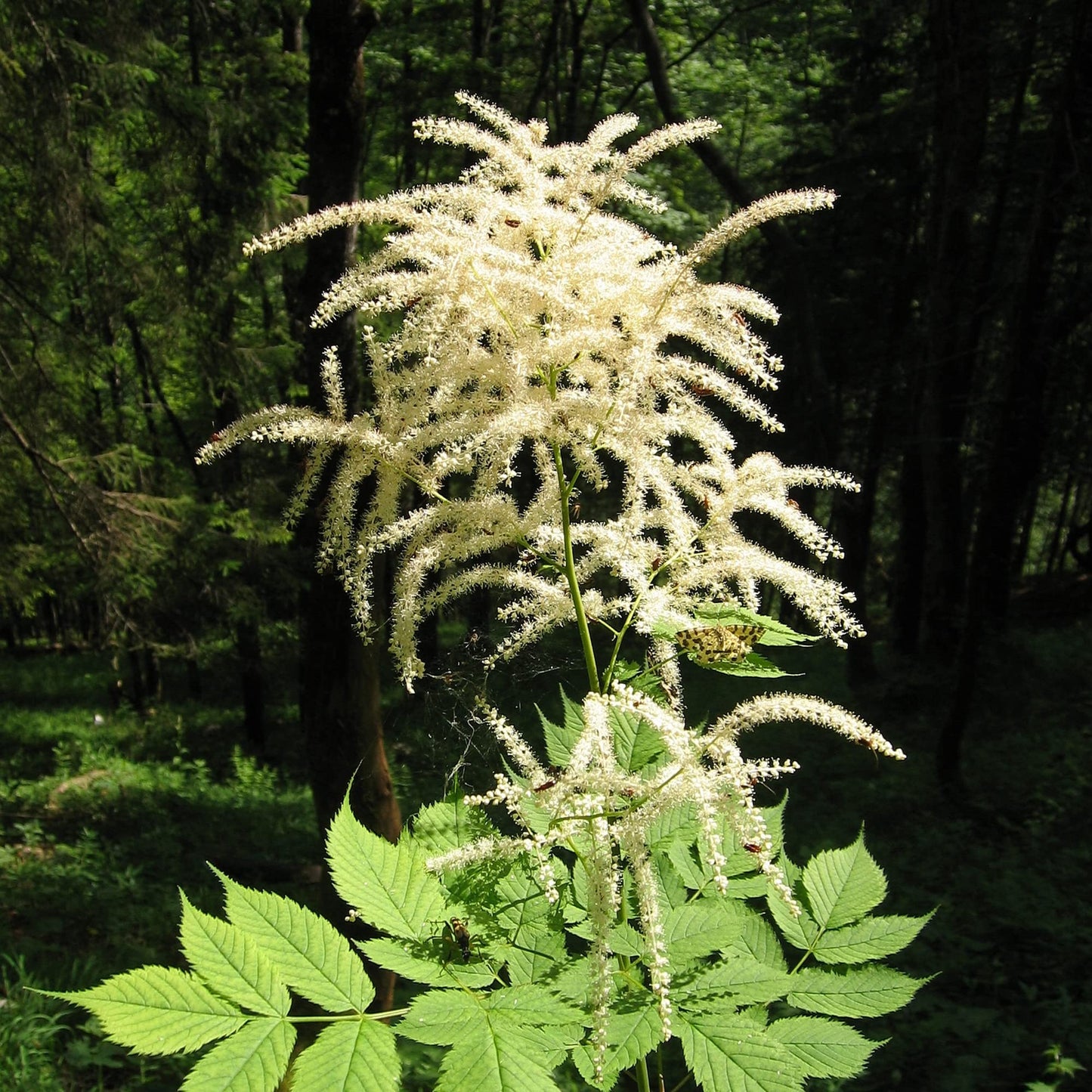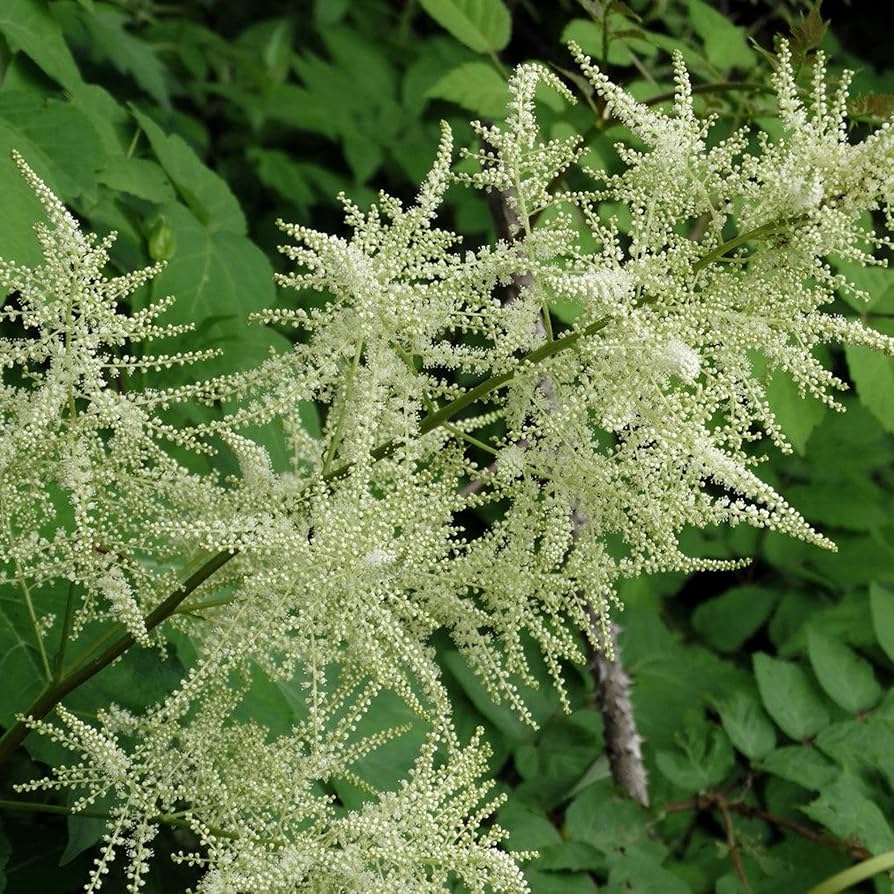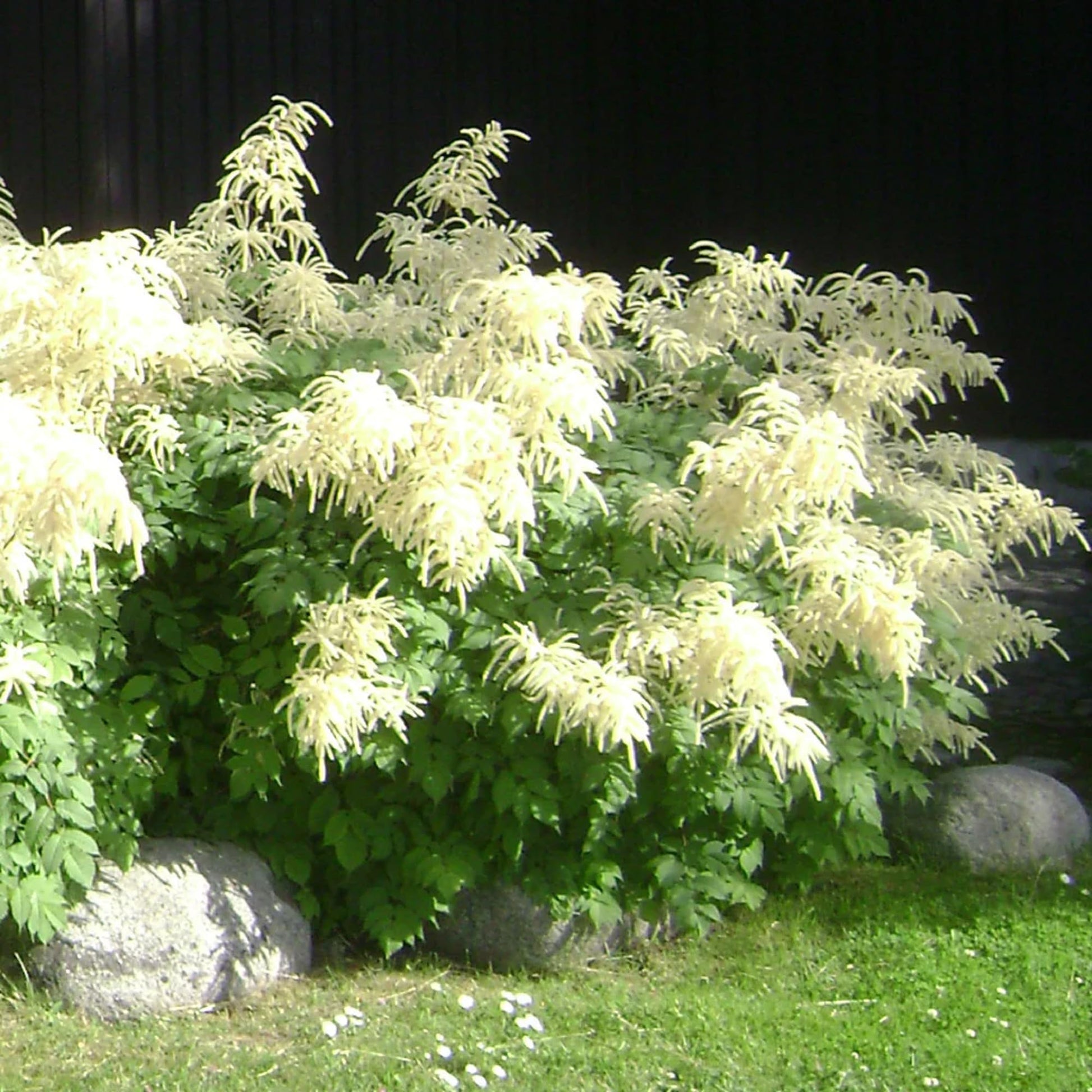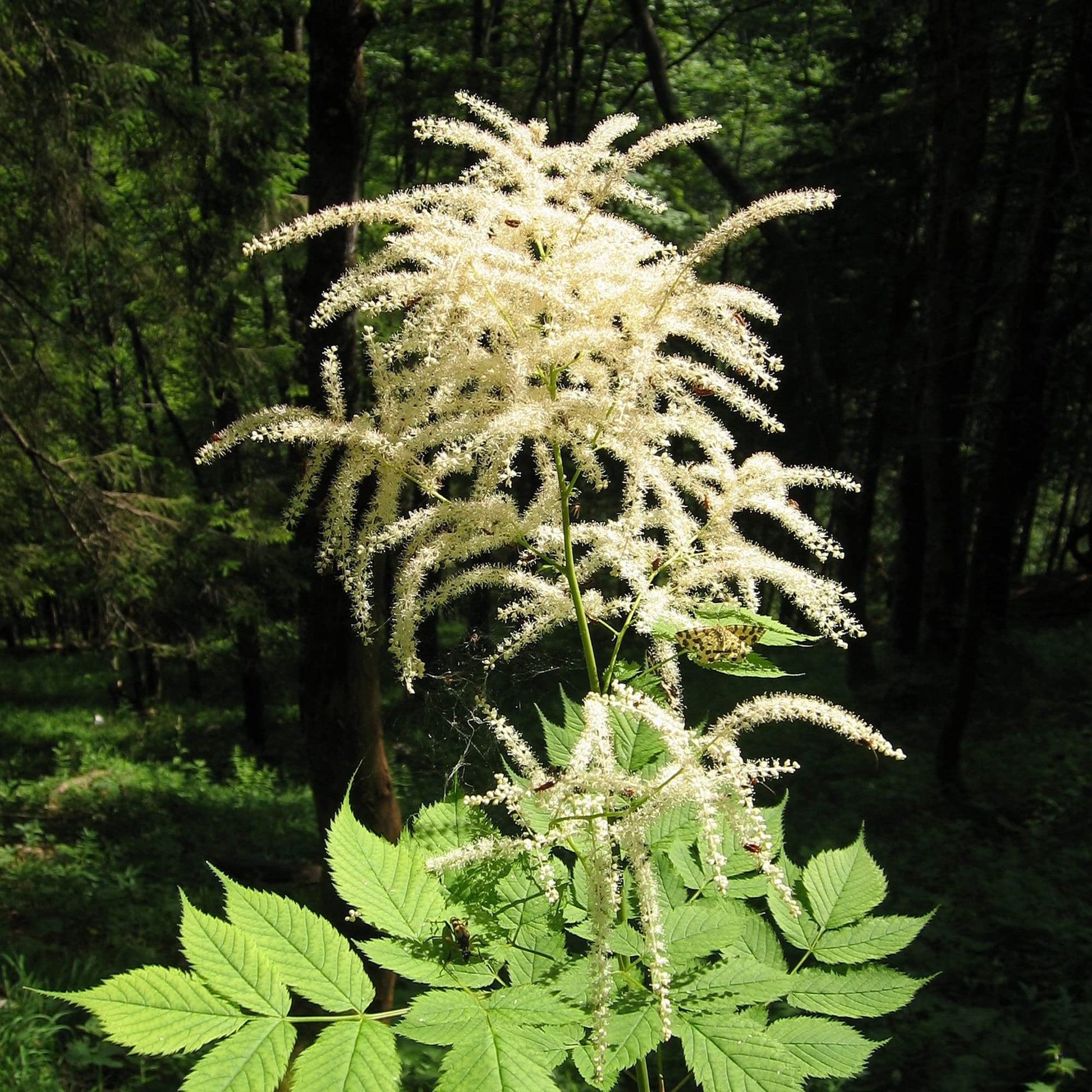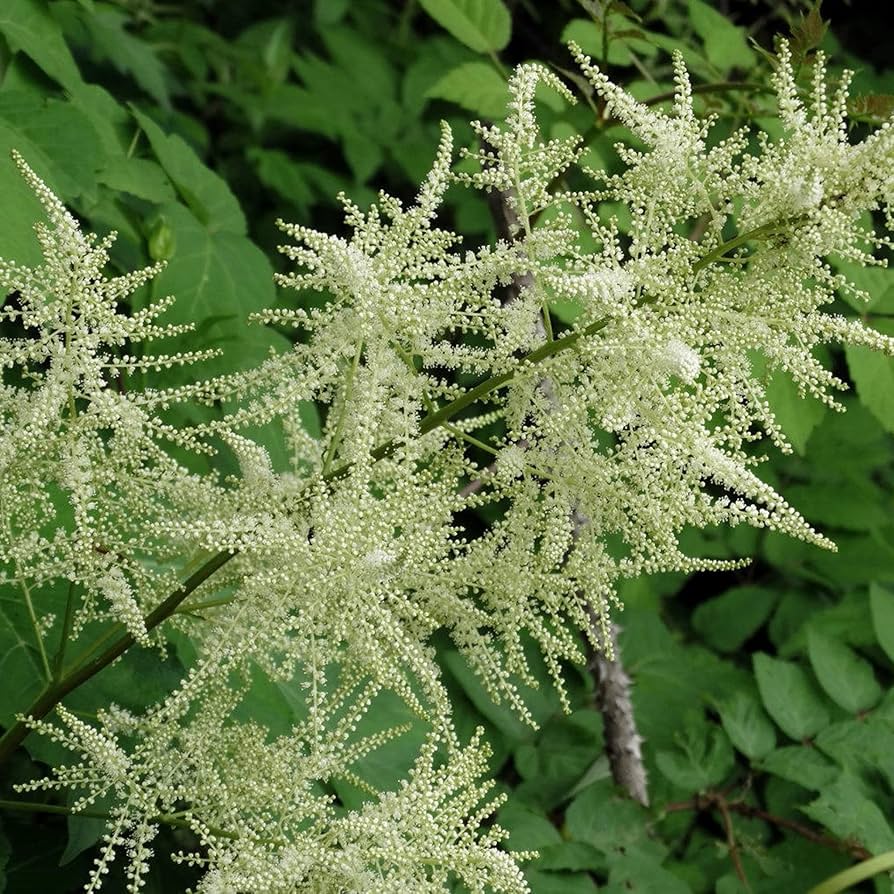Aruncus Dioicus Goat’s Beard Perennial Flower Seeds
Couldn't load pickup availability
Description
Aruncus Dioicus Goat’s Beard Perennial Flower Seeds
Characteristics and Uses of Aruncus Dioicus Goat’s Beard Plants
The Aruncus Dioicus Goat’s Beard, commonly known as Goat’s Beard, is a striking perennial plant known for its elegant, feathery plumes of creamy white flowers. This plant can grow to impressive heights, often reaching up to 6 feet, making it a perfect addition to the back of borders or as a specimen plant in the garden. It thrives in partially shaded areas and produces tall, arching flowers that add texture and visual interest to any landscape. Goat’s Beard is an excellent choice for gardeners seeking to create naturalistic or woodland-style gardens.
Growing Conditions for Aruncus Dioicus Goat’s Beard Plants
- Light Requirements: Prefers partial to full shade, making it an ideal choice for shady garden spots.
- Soil Type: Well-draining, slightly acidic to neutral soil rich in organic matter.
- Temperature: Thrives in temperate climates, with a preference for cool to moderate temperatures (60-75°F or 15-24°C).
- Humidity: Enjoys moderate humidity levels and benefits from consistent moisture during the growing season.
Planting Tips for Aruncus Dioicus Goat’s Beard
- Plant seeds indoors in early spring or directly outdoors once the soil is warm and frost danger has passed.
- Space plants about 18-2inches apart to allow for their expansive growth and to ensure good air circulation.
- Cover the seeds with a light layer of soil, as they require light to germinate. Keep the soil moist but not soggy.
- For best results, transplant seedlings outdoors when they are strong enough to withstand weather conditions.
Watering Instructions and Tips
- Water regularly, ensuring the soil remains moist throughout the growing season, especially during dry spells.
- It is important to keep the soil consistently moist, but avoid waterlogging, as this can lead to root rot.
- Water at the base of the plant to keep the foliage dry and prevent fungal diseases.
Growing Zones
- USDA Hardiness Zones: 4-9, making it suitable for a wide range of climates.
- Global Zones: Ideal for temperate regions and can be grown in gardens with moderate climates.
Key Benefits & Uses
- Produces showy, plume-like flowers that provide visual interest and texture in the garden.
- Its tall, arching flowers make it an excellent background plant for flower borders or as a standalone specimen.
- Thrives in shade, making it a perfect choice for woodland gardens, shaded borders, or areas with limited sunlight.
- Attracts pollinators such as bees and butterflies, contributing to a healthy garden ecosystem.
Best Uses in the Garden & Landscape
- Great for adding height and structure to the back of garden beds or borders.
- Ideal for shaded or woodland gardens where other plants may struggle to grow.
- Can also be grown in large containers or as part of a naturalistic planting scheme to create a soft, airy effect.
Conclusion
The Aruncus Dioicus Goat’s Beard is a versatile and striking perennial that brings elegant height and texture to the garden. Its feathery flowers and attractive foliage make it a valuable addition to shaded areas or naturalistic landscapes. Whether used as a specimen plant or a backdrop for other flowers, Goat’s Beard is sure to enhance your garden. bijaseeds, a big, trusted name in the seed world, offers a wide range of high-quality, non-GMO varieties to gardeners everywhere.
FAQ
How long does it take for Aruncus Dioicus Goat’s Beard to bloom?
After planting, Goat’s Beard typically begins to bloom in late spring to early summer, usually within 2-3 years of planting, as it takes time to establish its robust root system.
Can I grow Aruncus Dioicus Goat’s Beard in containers?
Yes, Goat’s Beard can be grown in large containers, though it will need a very spacious container to accommodate its spreading growth habit.
How do I care for Aruncus Dioicus Goat’s Beard during the winter?
In colder climates, mulch around the base of the plant to protect the roots from freezing temperatures. Goat’s Beard is typically hardy in USDA zones 4-9, so minimal winter protection is needed for most regions within these zones.
